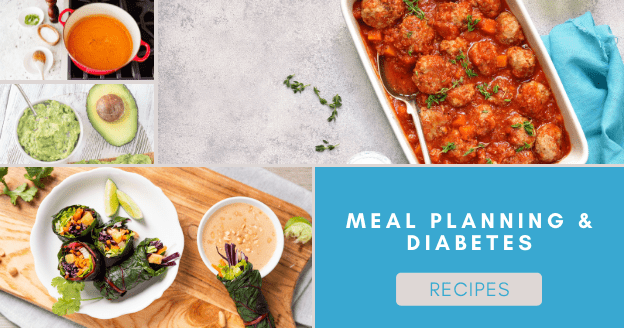Did you know? There are 11 million Canadians who are living with diabetes or prediabetes. Diabetes is a disease that occurs when the body either cannot produce insulin or cannot properly use the insulin it produces. Here we are going to focus on Type 2 which accounts for about 90% of cases.
For many diabetics, weight gain is an issue. On the flip side, however, some Type 2 diabetics have a hard time keeping weight on. There seems to be so many food restrictions to be aware of that sometimes eating just doesn’t happen often enough. The choices out there are so often full of carbs which convert to sugar, and with so many mixed messages it becomes somewhat exhausting just trying to maintain an individual’s ideal body weight.
Insulin plays a huge role in all of this. Since it is a hormone produced by the pancreas, its job is to regulate the amount of sugar/glucose in the blood. The body cannot function properly if one’s blood sugar is not stable. Too much, and your organs and nerves can be damaged. Too little, and fatigue, dizziness and headaches may occur. Since we are all about hormone balancing, this subject fits right in and is of great importance for finding balance.
Now wouldn’t it be great to regain energy and confidence in how your body will perform for you?
How Does Protein Fit in?
As with any cell or hormone in the body, it requires certain nutrients for the building process. It’s a given we include our No Yolking™ 100% Egg White Protein Powder into the mix: it has all 21 amino acids readily available for the body to help manage blood sugar levels and helps diabetics avoid the dreaded “spike”. A meal rich in protein ensures you stay fuller longer, which helps prevent overeating and keeps your weight balanced. It also helps overall immune function, tissue repair and muscle-building.
What Role Does Healthy Fat Play?
As Dr. Joseph Mercola, author of “Fat for Fuel” points out: knowing the amazing benefits of burning good fats (PUFA- Polyunsaturated Fats and MUFA – Monounsaturated Fatty Acids) to fuel our bodies is actually a cleaner and more efficient use of calories with NO sugar! Sadly, so many people tried Keto diets the wrong way and have loaded up with too much cheese and bacon (SFA-Saturated Fatty Acids) as opposed to the cleaner fats like MCT oil, avocado oils, organic butter, nuts and seeds and good Omega 3 oils to keep the brain firing on all cylinders.
These good fats (along with a variety of colorful vegetable and low sugar fruits for fibre and vitamins) are crucial along with clean proteins (free of hormones, antibiotics and preservatives). Many of our organs rely on these good oils to function properly: The brain, liver, kidney, and pancreas, that lovely little organ that’s trying to make digestive juices and insulin.
So the Keto diets that are high in SFA and TFA (cheese, dairy, oils for deep frying and beef etc.) contribute to heart disease by raising the LDL and lowering the good HDL levels along with creating inflammation in the body.
A good Keto like diet with good fats that lower the LDL cholesterol is something to aim for. It’s ok to have 7 to 10% of your diet being SFA if you are getting enough of the good unsaturated fats to balance things out.
With so many things that can be out of balance in a person’s body, let’s give a little help to that pancreas. By making sure the stomach and intestines are getting what they need to operate at their highest level so they can break down and assimilate nutrients properly–also giving the pancreas a little rest! That comes by adding in some digestive enzymes coupled with some good probiotics.
The body can deal with good fats quite readily, however even those who have removed their gallbladders, and thus losing bile production to help break down fats MUST compensate for that with their diet: think enzymes, bitters and good ole apple cider vinegar. A tablespoon taken 10 minutes before a meal with meats and fats will go a long way in helping the digestive process. You can also start your day with a large glass of room temperature water mixed with ½ lemon, 1 tablespoon of AC vinegar and some cinnamon to open the flow of the ducts and systems of the body. Keep sipping on the mixture throughout the day and watch your hydration and digestion improve.
Studies show that unsaturated fats can help lower insulin sensitivity: “Improving fat quality should be considered part of a dietary lifestyle strategy to prevent or manage type 2 diabetes. In practice, replacing fats from red meats and regular butter with non-hydrogenated vegetable oils and margarines rich in MUFA and/or PUFA should be encouraged to improve insulin sensitivity and reduce diabetes risk. Such dietary fat composition also lowers cardiovascular risk by reducing the serum LDL/HDL ratio and triacylglycerols”
With each meal, diabetics should try to focus on plenty of low-starch veggies, a good clean protein, and some good fats. Some low-sugar berries and fruits can occasionally be added for their amazing antioxidant properties. Try to keep the carb count for snacks around 15 g and any meal around 45 g.
If you have Type 2 diabetes and you’ve been given medication to excrete excess sugars from your body, you might want to ask yourself what if I just don’t give my body all those sugars in the first place? Can I get off some of those meds? Can I reverse Type 2 diabetes?
Some simple ways to think about how to do this is to make sure your meals are ideally:
> ½ plate of non-starchy veggies: leafy greens like lettuce, kale, spinach, broccoli, cauliflower, carrots, tomatoes, bell peppers, celery, Brussels sprouts, etc. (Going into the winter months ideally cooked, steamed, or stir fried).
> ¼ plate of protein:
- Meat: grass-fed beef, lamb, goat, etc.
- Poultry: free-range chicken, turkey, duck, etc.
- Seafood: wild-caught salmon, sardines, mackerel, tuna, anchovies, etc.
- Eggs
> Healthy fats: coconut oil, avocado, olive oil, MCT oil, grass-fed butter
> ¼ plate of whole grains like quinoa, wild or brown rice and a bit of oatmeal (Keto peeps will avoid this altogether for a period of time if trying to lose body fat)
Some Snack Ideas:
Here are a few examples of foods to consume in limited quantities and therefore make great snack options especially if you are on the go:
- Nuts: almonds, pistachios, walnuts, macadamia nuts, (about a handful or 1 ounce of nuts)
- Seeds: chia seeds, flax seeds, hemp seeds, pumpkin, sunflower, sesame.
- Fruits: 1/2 medium apple, banana or pear, 1 cup blackberries, 3/4 cup blueberries, 1 cup raspberries,1 1/4 cup whole strawberries, 1 cup cubed cantaloupe or honeydew melon (all contain about 15 g of carbohydrates)
- Dairy products: unsweetened yogourt, feta cheese, cottage cheese, goat’s milk, etc.
(Note that for other health reasons when choosing any dairy product go for organic and ideally use goat’s milk over cow’s for a smaller fat molecule to breakdown)
Foods to Avoid:
- Grains: bread, pasta, cereal, etc.
- Legumes: lentils, beans, and peas
- Starchy vegetables: potatoes, yams, corn, butternut squash, sweet potatoes, etc.
- Snack foods: baked goods, candy, cookies, crackers, sweets, etc.
- Sugar-sweetened beverages: soda, juice, sports drinks, energy drinks, sweetened tea, etc.
Some of the avoid foods such as lentils, beans, peas and the odd starchy veggie may be incorporated back into the diet a little at a time once your doctor gives you the green light that your Type 2 diabetes is completely under control.
It’s simpler than you think.
Some of our favourite diabetic-friendly recipes to try:


